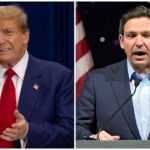
SCOTUS will rule in June 2024 on a First Amendment free speech case the federal judge called “the most massive attack against free speech in United States history” and the circuit court judge described as “fairly unsubtle strong-arming” by government officials using “mafiosi style” threats to increase regulation. Should government officials immediately cease contacting social media companies to censor content, with exceptions for illegal speech? The U.S. government attorney, Brian Fletcher, eloquently argues for SCOTUS to discuss the following theoretical legal issues regarding free speech censorship on social media rather than specifics of the case.
Should the government have privacy in speech moderation policies? The lawsuit discovery process exposed government pressure applied behind closed doors, with 24/7 badgering and profanity arising from the highest W.H., FBI, CDC, and CISA officials until Big Tech capitulation. The Twitter Files released by Elon Musk and the House Weaponization of the Federal Government subcommittee investigation uncovered a massive government-funded censorship-industrial complex that links third-party “trust and safety teams” within universities and foundations to social media platforms. These non-government organizations (NGOs), which include Stanford Internet Observatory (SIO), had secret censorship strategy meetings against private corporations like Twitter, Facebook, Google, and YouTube where named plaintiffs were deplatformed, suspended, shadowbanned, or deleted.
When the Disinformation Governance Board was rolling out in early 2023, public outrage led the Stanford NGO to form the Election Integrity Project (EIP) to create stories on Russian disinformation. While government purports to censor disinformation and enforce Big Tech data security, government became the #1 source of disinformation and engaged in massive personal data surveillance without a warrant.
Each federal agency demonstrated an escalation of demands until capitulation, direct access to data, and manipulation of content moderation policy. The White House achieved decreasing virality of content that lacked actionable “misinformation” like anti-vaccine posts while amplifying W.H. narratives. The FBI regularly monitored data, directly requested removal of speech from foreign and “state-sponsored actors,” and commandeered moderation policies. The intimate details of extensive government entanglement within each platform specific to each agency was repressive and intimidating — likely Fletcher would prefer to dwell on not intrusive government action, but rather theoretical issues like government rights and scenarios demanding urgent government oversight. Definitely, SCOTUS should not sanction the government right to monitor social media data and rewrite content moderation policy, nor enable secrecy in violating our freedom.
Can government officials contact social media platforms to remove unfavored by persuasion so long as coercive legal threats are not mentioned? Fletcher asserts that the government didn’t engage in coercion, but rather “significant encouragement” to censor misinformation.
Some background is needed to explain the tenuous position of social media platforms. Social media platforms are not classified as publishers, so they lack publisher First Amendment “freedom of the press” rights to free speech. They also lack common carrier protections afforded the telephone company or railroads. Instead, social media gain protection against lawsuits from Section 230 of the Communications Decency Act, without which Facebook (FB), Google, Twitter, YouTube, and all social media platforms could be sued for libelous user-generated content and effectively be unable to exist. When the White House asked FB to censor the “disinformation dozen,” for instance, FB leadership knew that the W.H. could pursue action against FB for non-action, very different from a W.H. request of a New York Times (NYT) journalist not to publish a story. The journalist could agree or publish without repercussions due to strong First Amendment protections. The W.H. can threaten FB with government litigation or loss of Section 230 protections for noncompliance, making any request from the government “unsubtle strong-arming.”
The threat of government litigation and loss of Section 230 are not theoretical. The Federal Trade Commission (FTC) and Department of Justice (DoJ) announced a broad antitrust review of “market-leading online platforms” different from individual targeting of Apple, Amazon, FB, and Google. The 2018 FTC/DoJ probe focused on platform online content moderation policy and requested that state attorneys general bring lawsuits against “digital platforms [not acting] in ways responsive to consumer demands.” The announcement coincided with FB’s Mark Zuckerberg paying a $5M fine for user privacy protection violations with the settlement requiring FB to establish an independent committee to oversee data and give a third-party organization access to FB’s data-collecting practices for 20 years. Despite no recorded violations by the FTC, regular meetings between FB and the FTC were established under threat of criminal penalties for noncompliance. Two weeks ago, the DoJ served Apple with an antitrust lawsuit, alleging anticompetitive behavior. The antitrust settlement that gave government oversight via third parties and access to FB data with regularly scheduled meetings sounds like the cozy government–social media relationship uncovered during discovery, the House Weaponization Committee hearings, and the Twitter Files release. By definition, communication by government agencies that have the power to litigate antitrust action or repeal Section 230 protections is coercive.
Should government censorship be permitted in certain circumstances, such as disinformation during public health threats or election season? Fletcher contends that government censorship should be permitted during a public health emergency. In reality, the declared emergency led to the evisceration of natural law–derived First Amendment constitutional rights, which enabled government to usurp power to force U.S. citizens into prolonged lockdowns, school closures, and business restrictions. The first U.S. lockdown began in the California Bay Area on March 16, 2020 after February 2020 communication among Bay Area public health county officers describe an atmosphere of chaos and non-data-driven decision-making as members strove “to operationalize the [CDC] quarantine plan.” The CDC outlined an untested quarantine plan, and jurisdictions throughout the U.S. followed it.
Lockdown began after seven California local public health officials (DPH) grasped their state-given “authority to control the spread of communicable disease” to mandate its counties’ 8.5 million citizens to shutter businesses, schools, and churches while healthy citizens were ordered to stay home. This first U.S. jurisdiction ordered police-enforced mandatory lockdown with censorship of dissenting voices with the following edict: “this [lockdown] Order is issued based on scientific evidence and best practices regarding the most effective approaches to slow the transmission of communicable diseases generally and COVID-19 specifically.” The published congratulatory self-reckoning explained their endeavor to ”control” the virus despite no knowledge of asymptomatic spread or efficacy of the mandated NPIs. By their self-reckoning, “face masks, physical distancing, and increased ventilation as prevention countermeasures had not been established yet.” They “recognized that SIP was a drastic measure with significant collateral social harm” yet implemented countermeasures “with no time for deliberation,” without known scientific benefit. Thus, DPH spread disinformation to get its residents to comply with CDC orders, fully aware that its draconian orders were untested strategies. To gain compliance, people were censored for criticizing harmful government mandates.
Because pandemic planning guides do not recommend lockdown, public health censored speech critical of the lockdown in the “hope” that their experiment on the U.S. population would work. With lockdowns indefensible and rigorous scientific evidence unavailable, the CDC failed to conduct important scientific trials and censored scientific scholarship that contradicted their mandates. During the discovery process of Missouri v. Biden, we learned that Big Tech, coerced by the highest levels of the Biden administration, censored speech — true speech — by the plaintiffs. They censored true information on the infection fatality rate, the low infection risk of the young versus the elderly, and protection by natural immunity.
When SCOTUS ruled in January 2022 to allow a CMS health care worker COVID-19 shot mandate, the justices claimed that “ensuring that providers take steps to avoid transmitting a dangerous virus to their patients is consistent with the fundamental principle of the medical profession: first, do no harm.” In making this decision, SCOTUS became the unwitting victims of censored speech, and believed “the vaccine is 100% effective” and Biden, who said that “[the unvaccinated] are killing people.” SCOTUS believed the CDC that sick patients would be safer from disease with vaccinated doctors and nurses as caretakers, making curtailing health care workers’ freedom worthwhile.
The public health threat, per Fletcher, required the government to censor speech promoting vaccine hesitancy due to the “hope that the vaccine would end the pandemic” despite Pfizer’s trial follow-up never tested for viral transmission or efficacy past two months. The government, who purportedly censored speech to combat misinformation, amplified CDC-sanctioned and W.H.-sanctioned health disinformation on social media, such as lock down at home to save Grandma, the mask is your best protection, the vaccine is 100% effective, and the Hunter Biden laptop is Russian disinformation. All these CDC public health missives turned out to be false — making the CDC and the W.H. #1 sources of misinformation — while censored speech by the five plaintiffs was true speech.
Ultimately, social media content should be designated either as a publisher, which can selectively censor certain viewpoints as a private entity or as a common carrier, which would be required to carry all viewpoints. By straddling both entities, the government can exert its regulatory power to coerce or “strongly encourage” censorship. Since the algorithms for posts to “go viral” lack transparency, the opportunity for the government to impose clandestine content regulation is significant. Fortunately, the public has a window into the extent of government intervention in monitoring, guiding, flagging, and modifying social media posts and algorithms.
The court system needs to uphold the First Amendment: “Congress shall make no law … abridging the freedom of speech.” In times of public health threats, observed misinformation, or foreign election threats, public health and homeland security can use their websites, press conferences, and standard news agencies to warn the public without making government the arbiter of truth. By allowing the federal government to censor true statements that are inconvenient to government edicts, we lose “a republic, if you can keep it.”
<img alt="
Image via Picryl.
” captext=”Picryl” src=”https://conservativenewsbriefing.com/wp-content/uploads/2024/04/a-massive-government-censorship-industrial-complex.jpg”>
Image via Picryl.





